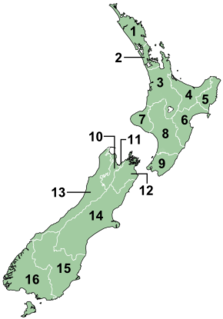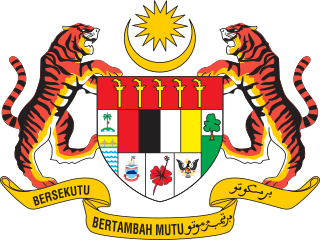Related Research Articles

New Zealand is divided into sixteen regions for local government purposes. Eleven are administered by regional councils, and five are administered by unitary authorities, which are territorial authorities that also perform the functions of regional councils. The Chatham Islands Council is similar to a unitary authority, authorised under its own legislation.
In England, local authorities are required to adopt one of three types of executive arrangements, which govern how decisions will be made within the council. Before the passing of the Localism Act 2011 there were two principal modes of executive arrangements, namely the "leader and cabinet" and the "elected mayor and cabinet" models. A third option "elected mayor and council manager" was withdrawn in 2007. Since 2012, principal authorities have been allowed to adopt the "committee system" form of governance.
The Environment Agency (EA) is a non-departmental public body, established in 1995 and sponsored by the United Kingdom government's Department for Environment, Food and Rural Affairs (DEFRA), with responsibilities relating to the protection and enhancement of the environment in England.

The Water Act 1973 is an Act of the Parliament of the United Kingdom that reorganised the water, sewage and river management industry in England and Wales. Water supply and sewage disposal were removed from local authority control, and ten larger regional water authorities were set up, under state control based on the areas of super-sets of river authorities which were also subsumed into the new authorities. Each regional water authority consisted of members appointed by the Secretary of State for the Environment, and by the various local authorities in its area.
River boards were authorities who controlled land drainage, fisheries and river pollution and had other functions relating to rivers, streams and inland waters in England and Wales between 1950 and 1965.
River authorities controlled land drainage, fisheries and river pollution in rivers, streams and inland waters in England and Wales between 1965 and 1973.
The government of Indianapolis is a mayor-council, consolidated city-county system. The executive branch is headed by the elected mayor, and the legislative branch is made up of the 25-member City-County Council. Indianapolis and Marion County have a consolidated government known as Unigov. Most government offices are located in the City-County Building.

An internal drainage board (IDB) is a type of operating authority which is established in areas of special drainage need in England and Wales with permissive powers to undertake work to secure clean water drainage and water level management within drainage districts. The area of an IDB is not determined by county or metropolitan council boundaries, but by water catchment areas within a given region. IDBs are geographically concentrated in the Broads, Fens in East Anglia and Lincolnshire, Somerset Levels and Yorkshire.

The Water Resources Act 1991 (WRA) is an Act of the Parliament of the United Kingdom that regulates water resources, water quality and pollution, and flood defence. Part II of the Act provides the general structure for the management of water resources. Part III explains the standards expected for controlled waters; and what is considered to be water pollution. Part IV provides information on mitigation through flood defence.

The Office of the Mining and Lands Commissioner is an agency of the Ministry of Natural Resources (MNR) in the Canadian province of Ontario.

The Ministry of Energy and Natural Resources, abbreviated KeTSA, is a ministry of the Government of Malaysia that is responsible for energy, natural resources, land, mines, minerals, geoscience, biodiversity, wildlife, national parks, forestry, surveying, mapping and geospatial data.

The Land Drainage Act 1961 was an Act of Parliament passed by the United Kingdom Government which provided mechanisms for river boards to raise additional finance to fund their obligations. It built upon the provisions of the Land Drainage Act 1930 and the River Boards Act 1948.

Holderness Drain is the main feature of a Land Drainage scheme for the area of Holderness to the east of the River Hull in the East Riding of Yorkshire, England. Construction began in 1764, and several notable civil engineers were involved with the scheme over the years. Despite the high costs of the initial scheme, it was not particularly successful, because of the refusal of the ship owners of Hull to allow an outlet at Marfleet. They insisted that the water be discharged into the River Hull to keep the channel free of silt. Following a period of agricultural depression and the building of new docks in the early 1800s, an outlet at Marfleet was finally authorised in 1832. A high level system still fed upland water to the Hull, but the low level system discharged into the Humber, where levels were considerably lower. Following the success of steam pumping on the Beverley and Barmston Drain, the trustees looked at such a possibility for the Holderness Drain, but the development of the Alexandra Dock in the 1880s and then the King George V Dock in 1913 provided a solution, as the docks were topped up with water pumped from the drain, to lessen the ingress of silt-laden water.

The Water Resources Act 1963 is an Act of the Parliament of the United Kingdom that continued the process of creating an integrated management structure for water, which had begun with the passing of the Land Drainage Act 1930. It created river authorities and a Water Resources Board. River authorities were responsible for conservation, re-distribution and augmentation of water resources in their area, for ensuring that water resources were used properly in their area, or were transferred to the area of another river authority. The river authorities covered the areas of one or more of the river boards created under the River Boards Act 1948, and inherited their duties and responsibilities, including those concerned with fisheries, the prevention of pollution, and the gauging of rivers. It did not integrate the provision of public water supply into the overall management of water resources, but it introduced a system of charges and licenses for water abstraction, which enabled the river authorities to allocate water to potential users. This included the water supply agencies, who now needed their supplies to be licensed.

The Salmon and Freshwater Fisheries Act 1975 is a law passed by the government of the United Kingdom in an attempt to protect salmon and trout from commercial poaching, to protect migration routes, to prevent willful vandalism and neglect of fisheries, ensure correct licensing and water authority approval. This helps to sustain the rural inland freshwater fisheries industry, which employs around 37,000 people in the UK.

The Water Act 1989 is an Act of the Parliament of the United Kingdom that reorganised the bodies responsible for all aspects of water within England and Wales. Whereas previous legislation, particularly the Water Act 1973, had focused on providing a single unifying body with responsibility for all water-related function within a river basin or series of river basins, this legislation divided those functions up again, with water supply, sewerage and sewage disposal being controlled by private companies, and the river management, land drainage and pollution functions becoming the responsibility of the National Rivers Authority.

The Environment (Wales) Act 2016 is an Act of the National Assembly for Wales that was given royal assent on 21 March 2016. It put into place the necessary legislation to enable the planning and management of the natural resources of Wales in a more sustainable, pro-active and joined-up way than was previously possible.

The River Boards Act 1948 was an Act of Parliament passed by the United Kingdom Government which provided constitutional, financial and general administrative structures for River Boards, which were responsible for the management of river board areas, and superseded the catchment boards that had been set up under the Land Drainage Act 1930.

The Flood and Water Management Act 2010 (c.29) is a UK Act of Parliament relating to the management of the risk concerning flooding and coastal erosion. The Act aims to reduce the flood risk associated with extreme weather, compounded by climate change. It created the role of Lead Local Flood Authority, which is the local government authority responsible for managing flood risk in the local government area. The Act gave new powers to local authorities, the Environment Agency, The Welsh Ministers and water companies.
References
- ↑ "Land Drainage Act 1991". www.legislation.gov.uk.
- ↑ "Water Resources Act 1991". www.legislation.gov.uk.
- ↑ "Internal Drainage Board Review – Final Report" (PDF). Archived from the original (PDF) on 2008-12-09. Retrieved 2008-05-15.